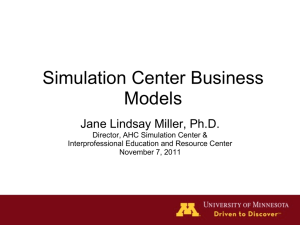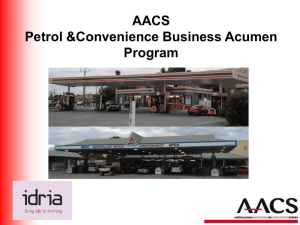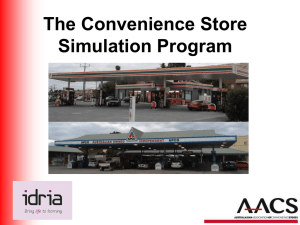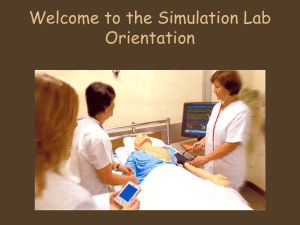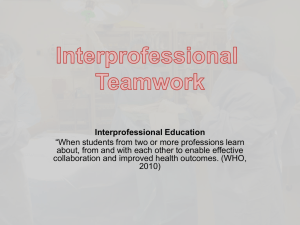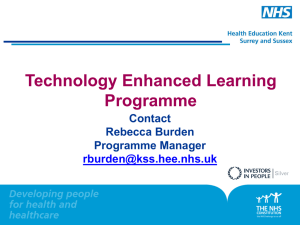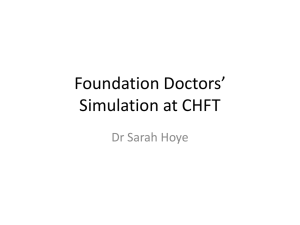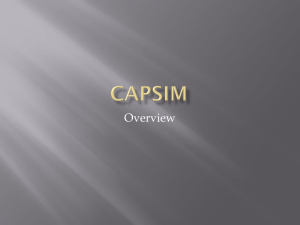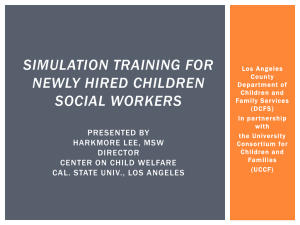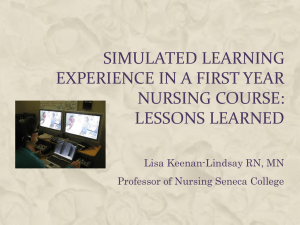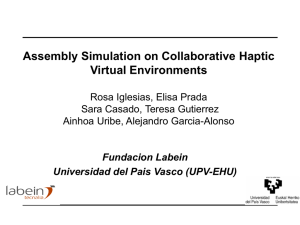Transforming the student experience learning through
advertisement
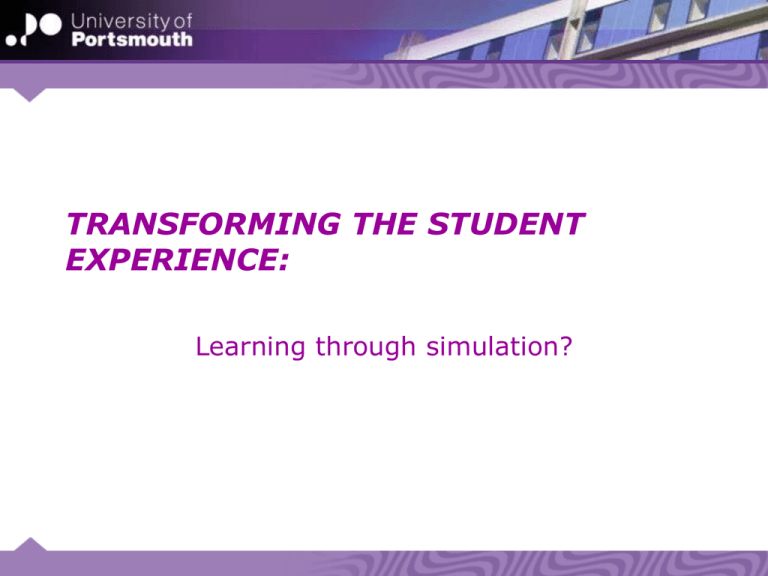
TRANSFORMING THE STUDENT EXPERIENCE: Learning through simulation? Agenda • Background to clinical education for Allied Health Professionals (AHPs) • History of simulation • Simulation as an adjunct? • Example • Future History and context of medical education The Anatomy Lesson of Dr. Nicolaes Tulp Rembrant, 1632 The Anatomy Act did clearly establish to whom a dead body belongs. Until relatively recently, the principle that the 'only lawful possessor of the dead body is the earth' prevailed in the UK. Background to clinical education for Allied Health Professionals (AHPs) • Apprenticeship • Socialisation Apprenticeship • Historical model of education • Alder Hey / Bristol enquiry highlighted problems • Teaching belies absolute patient care • Disparity between what the mentor “wants” to teach and what the student “needs” to learn Socialisation of students: Situated learning (One theoretical perspective) • Shared repertoire / joint enterprise (policy) • Community of practice • Mutual engagement (care of patient) • The stronger students are usually accepted into the community either through excellent knowledge and skill demonstration or pure belligerence Learning in placements? Social learning- sometimes poor teaching Unstructured learning unsupervised performance –learning by osmosis Self-directed practise – reinforcing poor techniques if unsupervised What is simulation? • Simulation is defined as a: “real world event that that represents a referent which then draws its essential meaning from that referent” • Unlike a simulator: “a simulator is comparable to a genetic code, and a simulation to the realization of that code into the living organism” Crookhall, Oxford and Saunders (1987) History of simulation • Jousting, chess, war-gaming, military exercise, Aviation • 1832 – Anatomy Act • 1960’s – SimONE • 1980’s –GAS • 1990’s – Surgical haptic simulators • 2000’s – HPS/ECS • 2010 – 3G/iStan Defining simulation types • Wargaming • Military training • Aviation • Jousting • Nuclear industry • Chess • Space programme • Emergency services • Tribal dancing • Forensics Simulation as a concept There are many terms that are afforded the term simulation, including: • Low fidelity manikin • Haptic systems • Hi Fidelity manikin • VR • Part task trainers • Simulated patients • Games (driving rehearsal) • Multimedia Hi fidelity simulation advantages • Draws referent from clinical practice (context) • Aims to facilitate suspension of disbelief • Allows for 4D teaching (time) • Allows for repetition and rehearsal • Stress innoculation (covert sensitisation) Benefits of simulation • Patients are not exposed to complete novices • Safe environment where mistakes become learning opportunities • Complexity can be altered according to the needs of the student • Self efficacy can be built before contact with real patients Benefits of simulation Students can: • repeat the skill as often as necessary to develop confidence • learn at their own pace • experience being ‘on the receiving end’ • express their fears and ask ‘difficult’ questions • make mistakes and appreciate the consequences without harm to the patient Hierarchy of skills learning Supervised clinical practice with feedback 10 9 8 Learning in simulation with feedback 7 6 Unsupervised clinical practice 5 4 3 Demonstrations & DVDs 2 1 Manuals and books 0 Hi fidelity simulation disadvantages • Adrenaline gap • Uncanny valley • Fear / upset • Manpower hours Practise makes perfect Practise makes permanent! Only well supervised practise with constructive feedback makes perfect Simulation as an accepted adjunct to learning? • • • • • • Bristol Enquiry 2002 NMC CODP CoP HEFCE CeTL’s 2005 2008 CMO report CMO report 2008 Anaphylaxis simulation Theory – practice dichotomy • If used correctly simulation will facilitate classical conditioning (2nd nature) • Objective outcome measurement (Anne vs iStan) • Development of communication and psychomotor domains Future??


